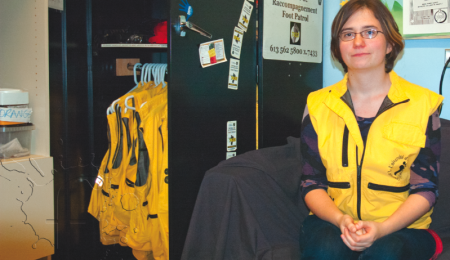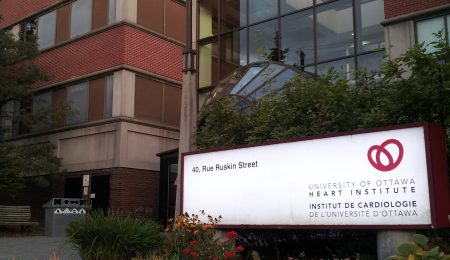U of O Heart Institute ranked number one in acute care
Jesse Mellott | Fulcrum Staff
Illustration by Mathias MacPhee
In a recent survey by the National Research Council Picker, the University of Ottawa’s Heart Institute was ranked number one in acute care in Ontario. The ranking, based on patient surveys, gave top spot to the U of O institution, which was founded in 1969 and forms a wing of the Ottawa Hospital’s Civic Campus. Professor Adolfo de Bold teaches pathology and laboratory medicine at the U of O, and is director of the cardiovascular endocrinology laboratory at the Heart Institute.
“The patients come in knowing that they have a world-class institution,” said de Bold. “It helps us talk about the overall excellence in the place. As such it helps us with recruitment of top notch [doctors], both in the clinic and basic research environment. It’s a multiple benefit that you derive from something.”
The Heart Institute combines cardiologists, surgeons, and researchers in one place. It was developed by the now-retired Dr. Wilbert Keon, who decided to put all of these levels of expertise under one roof. Dr. Michele de Margerie, director of the francophone arm of the cardiac rehabilitation program at the Heart Institute and professor of family medicine at the U of O, said the hospital is able to do tests that other hospitals in the region cannot.
“The Heart Institute is the only one [hospital] that does certain tests, such as the angiogram; we are the only ones that have those labs,” said de Margerie. “We are the only ones that have electrophysiology labs for electro-cardiac problems, where we can study and treat them. We are also the only heart surgery centre.”
The institute’s best asset, according to Vice President of Clinical Services Heather Sherrard, is that it assists patients throughout their treatment.
“We do everything from prevention of heart disease, right up to diagnosing, treating, operating, and rehabilitating,” said Sherrard. “We have the full spectrum of heart disease, right from risk factor identification … to rehabilitation right after you have had heart surgery.”
The Heart Institute, de Margerie said, provides medical students at the U of O with particular benefits that other facilities may not.
“I think it’s wonderful for the medical students to see the whole gamut of tests and interventions that can be done on a heart in one place,” said de Margerie. “Here, if you are a student, you can take part from the very beginning of the cardiac issue to the cardiac rehab.”
“It’s a very supportive kind of environment,” Sherrard explained. “I think for trainees and students, having the research building connected right to the hospital is very helpful. So when we do rounds, we alter them between clinical rounds and research.”
Acute care, or short-term treatment, is not the institute’s only area of extpertise.
“I think that acute care delivery is just one area where the institute is known to excel,” said de Bold. “We have[excelled] in just about every aspect of the institute. We have [additional] activities that have been recognized. It’s all due to the people and the generation of a culture of excellence. If people see excellence in one area, be it in acute care or wherever, then they tend to strive to be the best they can.”
This past spring, the Heart Institute was also named in the top 2% of all research hospitals in the world.





